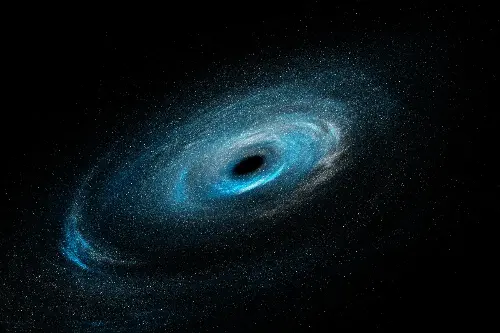The cosmos has long served as humanity's final frontier, a vast expanse of enigmas and wonders that has both lured and eluded our inquisitive nature. Despite monumental strides in understanding the universe, a number of astronomical mysteries remain, compelling scientists to peer ever deeper into the void. In this exploration, we delve into four such enigmas that continue to intrigue and baffle the scientific community.

The Elusive Nature of Dark Matter
Dark matter, the unseen and unfelt substance, is thought to constitute approximately 85% of the total matter in the universe. Its existence was first inferred from gravitational effects on visible matter and radiation. The evidence suggests that this mysterious matter envelopes galaxies, providing the additional gravitational force needed for them to remain intact despite the high speeds at which they spin. However, it neither emits nor absorbs light, making it invisible to current detection methods. Numerous experiments are underway in the quest to identify the particles that compose dark matter, but as of now, its true nature remains one of the universe's greatest conundrums.
The Perplexing Puzzle of Dark Energy
Equally as perplexing as dark matter is the concept of dark energy, a hypothetical force that is causing the universe to expand at an accelerating rate. It accounts for about 68% of the total energy in the universe. The discovery of dark energy in 1998 through observations of distant supernovae was a watershed moment that overturned the long-held notion that the universe's expansion was slowing down. Dark energy remains a profound mystery, with theories ranging from the cosmological constant, a property of space itself proposed by Einstein, to more exotic ideas involving new fields and forces. Understanding this enigmatic energy could redefine physics as we know it.

The Enigma of Black Hole Singularities
At the heart of a black hole, physics as we know it breaks down. Black holes are regions of space where the gravitational pull is so strong that nothing, not even light, can escape. According to the theory of general relativity, the core of a black hole, known as the singularity, is a point of infinite density where space and time cease to exist. However, the concept of "infinity" does not sit well with quantum mechanics, the other pillar of modern physics. The marriage of these two theories into a quantum theory of gravity, potentially explaining singularities, is a key goal in physics but has eluded scientists so far.
The Cosmic Conundrum of Fast Radio Bursts
Fast Radio Bursts (FRBs) are one of the newest mysteries to puzzle astronomers. These intense bursts of radio waves emanate from unknown origins millions or even billions of light-years away. They last just milliseconds and appear to be the release of vast amounts of energy. While some FRBs have been traced to distant galaxies, their origins are unclear. Do they come from collapsing neutron stars, black hole mergers, or are they the signatures of something entirely undiscovered? The transient nature of FRBs makes them difficult to study and, therefore, to understand.
The secrets of the cosmos are vast, hiding within them the keys to understanding the very fabric of reality. The enthralling puzzles of dark matter, dark energy, black hole singularities, and fast radio bursts continue to fuel the passions of scientists and stargazers alike. As we venture further into the unknown, the answers we seek may not only illuminate the nature of the cosmos but also our place within it. Every discovery is a step closer to comprehending the majestic tapestry of the universe—a reminder that, in the words of Carl Sagan, "Somewhere, something incredible is waiting to be known."
